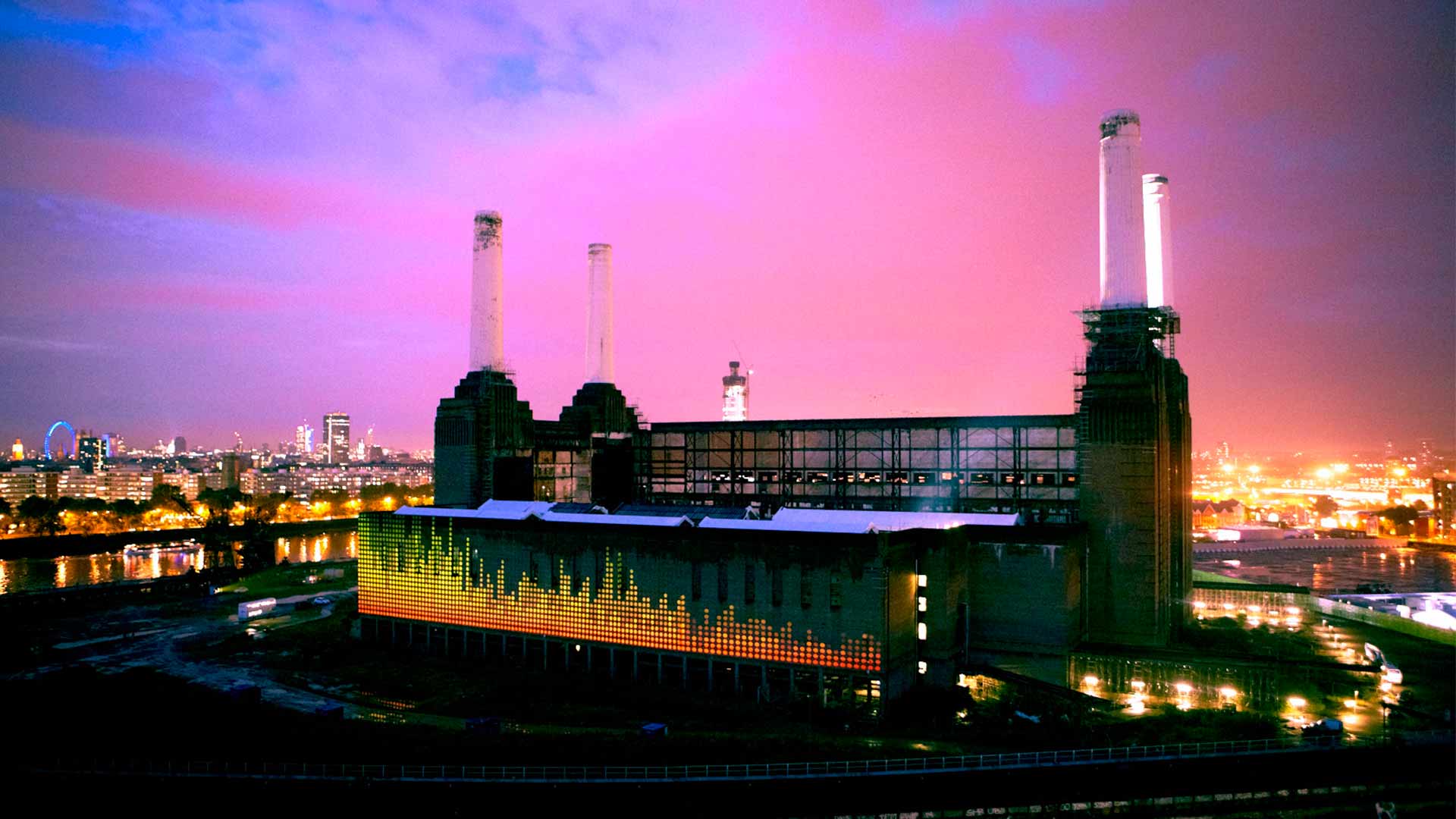Lighting, Brand and Experience
If you think of brand events, it’s important to stress their plurality. A brand experience can be anything from a product launch designed to boost sales through to more of a brand positioning event designed to raise awareness. Often a demonstration of a brand’s principles and behaviour is just as important as driving traffic to retail, which is why you’ll see the terms brand experience and experiential marketing increasingly used to describe event activity. Similarly, branding used to be all about frequency and placement of a logo or motto, but now there’s much more subtlety and sophistication to this process of branding an event, with more and more tools at hand to help us achieve this.
It may sound somewhat pretentious to talk about communicating with light, but often that’s what we’re tasked with doing, and the popular client request to “own” a particular colour of their brand palette isn’t far off the mark. Unsurprisingly the first stop is use of the brand’s own colour palette to establish a visual association, but you can’t only light an event using a single colour. In addition to using Lighting Designers to plan the look and feel, often we commission bespoke installations from artists who specialise in particular disciplines such as neon, and work closely with brands’ retail design teams to ensure we’re consistent with the lighting they’re using in their stores. We’re also seeing more opportunities to integrate crossover technology such as motion-sensor lighting installations, to make the lighting part of the physical experience (I take my hat off to whoever was clever enough to originally hack the Xbox Kinect sensor that now seems to be the ubiquitous choice of gesture-based installations). Another key element has been the work of acclaimed practitioners such as Luftwerk, James Clar and United Visual Artists (who I have been very lucky to have worked with), whose ability to fuse true artistry with a commercial brief has opened the doors to a much more associational and softer use of light as a branding tool at brand events. These guys have become headline acts in themselves, and so not only represent a best practice use of talent but also a more brand-to-brand association in the eyes of the consumer, which in turn contributes to the underlying marketing message.
For a long time at events atmosphere was by and large created by lighting, or more specifically lack of it. Make it dark, intimate and cool was the mantra, then User Generated Content appeared. We were seeing that not only were guests filming our events on their mobiles and sharing that content, but that clients were increasingly happy for that to happen. As a direct consequence we began to increase light levels at our events, to enable the footage shot on mobiles to be better quality and therefore more sharable. This can be done without compromising the on-site experience, which can be a problem when staging an event that needs to be shot for TV or film. Often a decision has to be made about which audience is most important, those there on the day or the viewers who will be watching it on a screen later. When faced with this dilemma I can only advise that the decision about whose experience is catered for should be made as early as possible, so that the live event can be designed as sympathetically as possible for all of its participants. They need to know up front if they’re attending an event or being the audience. It may not sound like a huge difference but the dynamic is very different and fundamentally changes a lot of the decisions that go into producing the event.
There’s an overlooked level of artistry in effectively lighting events that don’t outwardly appear to have the theatrical flourishes of more overtly creative events. I’ve no doubt there’s a long queue of LDs who will tell you that’s the mark of great lighting design right there. Lighting a conference stage without compromising the huge projection screens in the stage set is just one example of this. Just as it’s easy to overlook the understated tricks used in permanent lighting designs for stores and bars, the quietly effective work of LDs and riggers to create lighting positions and impactful lighting states, in the most challenging locations we can find to stage events, is often overlooked because of its subtlety. At the moment I’m wrestling with a problem that involves an outdoor show taking place at dusk, when the lighting effects we really want to use need it to be a lot darker. I fear that there are not enough lumens in the world to get us round that one.
So anaesthetised are we to the wonders of all this lighting technology that we sometimes forget there are actual, real-life boundaries (and there is still a frustrating lack of real-world Photoshop to help us out) that cannot be avoided. In my humble opinion, it’s precisely these parameters that contribute most to the wonders we can achieve with colour, intensity and movement of light. We can’t just wave a magic wand to create what we need, we have to rely on years of experience, talent and the human eye to create an environment that provokes a positive reaction in our audiences. And that’s kind of the point. We want to create a connection between the brand and the consumer, and the only way to do that meaningfully is on a human level if you want a positive reaction from the human part of that equation. So while I eagerly await the next development that inspires us to ever more engaging and clever tricks, I don’t believe any amount of technology will or should replace the judgment of the human designing the experience.
Paul Stanway is Creative Director and co-founder of XYZ, a new brand experience agency in London.
www.thisisxyz.com @thisisXYZ [email protected]
Photography: XYZ







